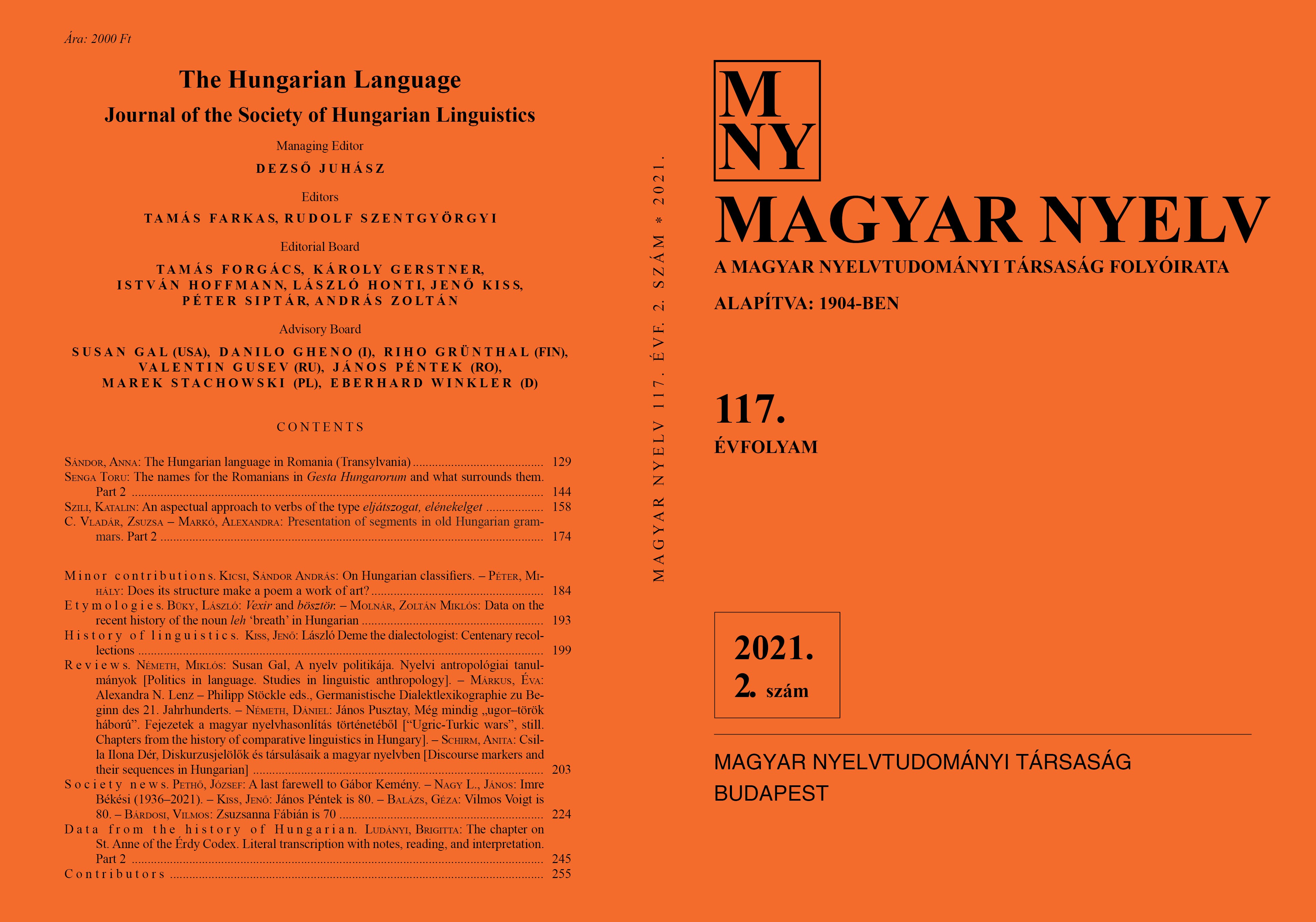An aspectual approach to verbs of the type eljátszogat, elénekelget
DOI:
https://doi.org/10.18349/MagyarNyelv.2021.2.158Keywords:
delimitatives, terminativity, telicity, temporal boundedness, verbs of scalar changeAbstract
This paper discusses the contradictory nature of the aspectual features of the delimitative verbal prefix el- ‘away’ and the temporal boundedness of the event expressed by the base verb together with its atelic nature. As a detailed analysis of the characteristics associated with the atelic – telic opposition confirmed that the two features are unsuitable for an appropriate description, the author used the concept of terminativity of Slavic aspect studies in an attempt to identify a set of verbs in aspectual terms. In line with similar approaches, the author divided terminativity, which means the general, external and internal temporal delimitation of events, into three groups: absolute telic, relative telic and simple terminative. The latter category is comprised of events that are only bounded in time. The three terminative groups provide a powerful tool to categorise not only delimitatives but also verbs of scalar change, the largest semantic group that reveals the relative nature of telicity: their non-prefixed versions belong to the relative subgroup, whereas those with a prefix belong to the absolute telic subgroup. This categorisation may be affected by the pragmatic circumstances.
Downloads
Published
Issue
Section
License
Copyright (c) 2024 Katalin Szili

This work is licensed under a Creative Commons Attribution-NonCommercial-NoDerivatives 4.0 International License.
Magyar Nyelv is a Diamond Open Access periodical. Documents can be freely downloaded and duplicated in an electronic format, and can be used unchanged and with due reference to the original source. Such use must not serve commercial purposes. In the case of any form of dissemination and use, Hungarian Copyright Act LXXVI/1999 and related laws are to be observed. The electronic version of the journal is subject to the regulations of CC BY-NC-ND (Creative Commons – Attribution-NonCommercial-NoDerivatives).
The journal permits its authors, at no cost and without any temporal limitation, to make pre-print copies of their manuscripts publicly available via email or in their own homepage or that of their institution, or in either closed or free-for-all repositories of their institutions/universities, or other non-profit websites, in the form accepted by the journal editor for publication and even containing amendments on the basis of reviewers’ comments. When the authors publicize their papers in this manner, they have to warn their readers that the manuscript at hand is not the final published version of the work. Once the paper has been published in a printed or online form, the authors are allowed (and advised) to use that (post-print) version for the above purposes. In that case, they have to indicate the exact location and other data of the journal publication. The authors retain the copyright of their papers; however, in the case of an occasional secondary publication, the bibliographical data of the first publication have to be included.



